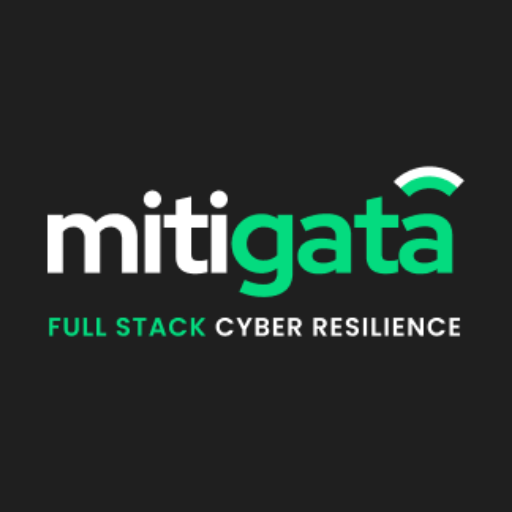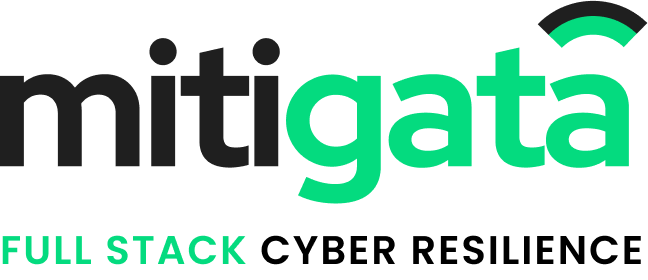A cyberattack happens somewhere in the world every 39 seconds. Almost 45% of attacks hit small and medium-sized businesses, many of which never recover.
Even if you employ the greatest antivirus and firewall solution and have a strong IT team, you cannot monitor every threat across all endpoints, network layers, and cloud environments.
Regardless of the size of the company, you must have a Security Operations Center (SOC) as your primary line of defence.
In this blog, we’ll explore the top SOC tools and find the best fit for your business.
Mitigata: Your Best Partner in SOC Services
We are India’s only full-stack cyber resilience company, offering SOC services, including 24/7 monitoring, incident response, and threat identification. With 800+ clients across multiple industries, our AI-powered solutions offer advanced defence against growing cyber threats.
Why 800+ businesses have chosen Mitigata?
24/7 Protection: We have an in-house team of qualified professionals who work day and night to ensure your safety.
Advanced Threat Detection: We use AI and GenAI tools to quickly identify and respond to threats before they escalate.
Comprehensive Security Tools: We use top-tier security solutions, including SIEM, EDR, XDR, and firewalls, to safeguard your business at all points of vulnerability.
Personalised Security Solutions: With SOAR (Security Orchestration, Automation, and Response) and native case management, we can customise our security strategy as per your needs.
Cost-effective Security: By choosing us, you can save up to 50% over building an in-house security team with premium tools.
Faster Response Times: We use AI and Machine Learning to shorten response times by up to 90% and neutralise threats in real time.
Your Full Cyber Defence Starting at Just ₹2,00,000/Month

Top SOC Monitoring Tools for Businesses
Here are the key tools every modern SOC relies on, and how they help safeguard your business:
Endpoint Detection and Response (EDR)
EDR functions as a bodyguard deployed at every laptop, desktop, server, and mobile device in your company. Unlike passive antivirus applications, they actively seek down threats.
It continuously collects endpoint data, detects unusual behaviour, and may automatically isolate infected systems to contain attacks.
Top Features:
- Threat detection across all endpoints.
- Automated response to identified threats.
- Root cause analysis for incidents.
Real-World Application: If your employee clicks on a phishing link, EDR will help in detecting anomalous behaviour. Following this, it will isolate the infected system and alert your SOC team within seconds, stopping any attack
Extended Detection and Response (XDR)
EDR secures individual endpoints, while XDR unifies protection across your entire digital environment. This includes endpoints, networks, cloud, email, and apps. It breaks down data silos by combining insights from EDR, SIEM, and cloud tools into one clear threat view.
Top Features:
- Integration of data across multiple sources.
- AI-driven analysis for comprehensive threat detection.
- Enhanced incident response across multiple vectors.
Why It Matters: Modern cyberattacks do not target just one point. They travel laterally. XDR tracks attackers as they go from email to endpoint, network, and cloud, displaying the entire attack chain that siloed tools would miss.
XDR Without the High Price Tag
Starting at just ₹1,200/endpoint, get your personalised advanced XDR solution with zero hidden fees.

Security Information and Event Management (SIEM)
SIEM, the central intelligence hub, is like your SOC’s brain. It collects, analyses, and correlates security data from all sources such as endpoints, firewalls, servers, and apps. Then, uses correlation rules to detect anomalies in real time.
Top Features:
- Real-time monitoring and alerting.
- Advanced correlation of data from different sources.
- Compliance reporting and auditing.
Example: Your SIEM notices that a user account accessed files from three different countries within 10 minutes, which is impossible. It automatically flags this as credential theft and triggers authentication protocols.
Cloud Security Platforms
As companies shift to AWS, Azure, and Google Cloud, old security perimeters don’t work anymore. Here’s why Cloud Security Posture Management (CSPM) tools become important as they continuously evaluate setups, monitor for unauthorised access, and detect unusual behaviour across all cloud platforms.
Top Features:
- API visibility and control
- Data encryption and access controls.
- Continuous monitoring of cloud environments for threats.
Why it matters: Cloud security tools prevent disasters like the infamous Capital One breach, where misconfigured cloud settings exposed 100 million customer records.
Your Cloud Deserves More Than Basic Antivirus
Trusted by 800+ fast-growing businesses and backed by top-tier partners, we give Cloud Security solutions at the best rates.

Next-Generation Firewall (NGFW)
Next-generation firewalls (NGFWs) are far beyond the simple packet filters of yesterday. They’re intelligent gatekeepers analysing traffic at the application layer.
It protects the network perimeter using deep packet inspection (DPI), intrusion prevention (IPS), and SSL/TLS decryption to detect malicious traffic before it reaches your systems.
Top Features:
- Traffic filtering based on IP addresses, ports, and protocols.
- Application-level security to prevent unauthorised access.
- Intrusion prevention systems (IPS).
Why it matters: Firewalls have proven successful in preventing 99% of attacks from reaching your internal systems by filtering out port scans, DDoS attempts, and exploit traffic.
Data Loss Prevention (DLP)
DLP tools monitor data in motion (emails, uploads) and at rest (files, databases) to prevent unauthorised data transfers. These tools help in avoiding data breaches and ensuring compliance with regulations.
Top features
- Content inspection to identify sensitive data.
- Policy enforcement to regulate access to and exchange of sensitive information.
- Real-time alerts and reporting for data loss incidents.
Why it matters: DLP stops insider attacks and unintentional data leaks. When an employee tries to email client databases to a personal account, DLP prevents the transfer and notifies your security team.
Your Data’s Bodyguard— On Duty 24/7

Identity and Access Management (IAM)
Identity and Access Management makes sure that people have access to the right resources at the right time. It maintains Zero Trust principles by confirming identity at each access point with multi-factor authentication (MFA), single sign-on (SSO), and role-based access controls (RBAC).
Top features:
- SSO allows for quick authentication.
- Multi-factor authentication (MFA) for boosting security.
- Role-based access control (RBAC) to limit access.
Why it matters: 81% of all breaches include stolen or compromised credentials. IAM tools make credential theft significantly more difficult while also limiting the damage caused by breaches.
Conclusion
Every minute counts when a threat hits your network. The right SOC tools, if paired with expert management, can turn chaos into control.
Mitigata’s Managed SOC Services combine these solutions with continuous human oversight, giving your business proactive defence.
Stay ahead of the next breach. Contact Mitigata today!

